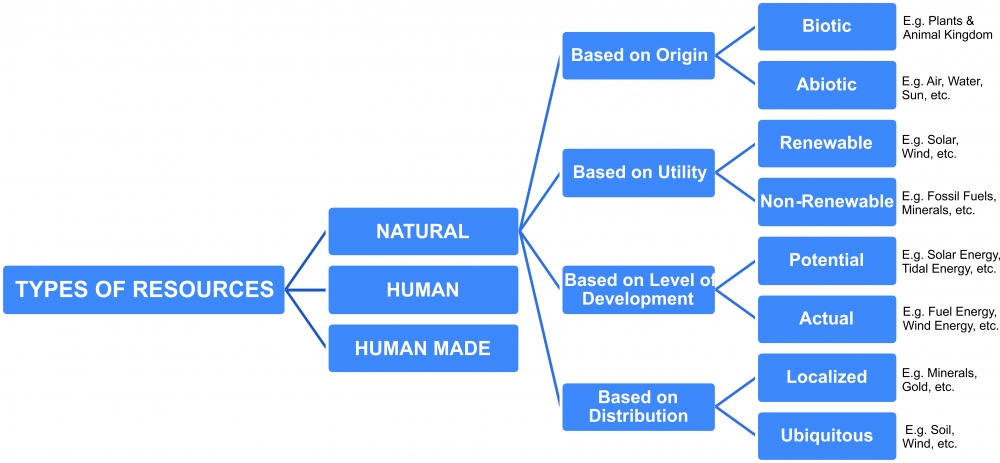Class VIII: Chapter 1 (Resources) Question & Answers
Q1. What is a resource?
Ans: Anything that can be used to satisfy human needs is a resource.
OR
All the objects in the environment, which are useful to man and have a value, are called "Resources".
Q2. Define different types of values.
Ans: Value means worth. The use of a resource depends on its value. Following are the types of values:
(a) Economic Value: Some resources can be bought or sold, or can be used to make things that can be bought or sold. For e.g. Minerals.
(b) Aesthetic Value: We enjoy the beauty of mountains, waterfalls, sea, landscapes. Thus, they are resources which have "Aesthetic Value".
(c) Legal Value: Resources like, Air, Water, Land, etc.. Are essential part of life, thus, it become our responsibility to protect them from pollution. These are "Legal Values" of the resources.
(d) Ethical Value: "Ethical Values" of the resources indicates us that we should protect our flora and fauna from intensive cutting of trees and killing of wildlife.
Q3. Define conservation of resources.
Ans:: Using resources carefully, judicially and giving them time to get renewed is called conservation of resources.
Q4. Distinguish between Natural and Human Made Resource.
Ans:

Q5. Distinguish between Renewable and Non-Renewable Resources.
Ans:

Q6. Distinguish between Ubiquitous and Localized Resource.
Ans:

Q7. Distinguish between Potential and Actual Resource.
Ans:

Q8. Explain sustainable development with its principles.
Ans: Balancing the need to use resources and also conserve them for the future is called sustainable development.
Development of the resources should be done without damaging the environment and the needs of present generation should not be compromised with those of the future generations, this is known as sustainable development.
Some Principles of Sustainable Development:
1. Respect and care for all forms of life.
2. Improve the quality of human life.
3. Conserve the earth's vitality and diversity.
4. Minimise the depletion of natural resources.
5. Change personal attitude and practices toward the environment.
6. Enable communities to care for their own environment.
Q9. "Human beings are important resources". Justify the statement.
Ans. Human resource consists of people. Human resource and its proper development are of great importance. The creative mind of humans and the desire to satisfy their need helped them to produce different products and services that we see, feel and observe in our day-to-day life. For example: iron ore was used to build tools, machines, etc.
People with healthy mind and body have great potential to produce anything that they desire. People can make the best use of nature to create more resources when they have the knowledge, skill and the technology to do so. That is why human beings are a special resource and they are the most valuable resource of the present time.
Q10. Draw a flow chart to explain the classification of resources with examples.
Ans:

-----x-----X-----x-----

There are no published comments.
New comment